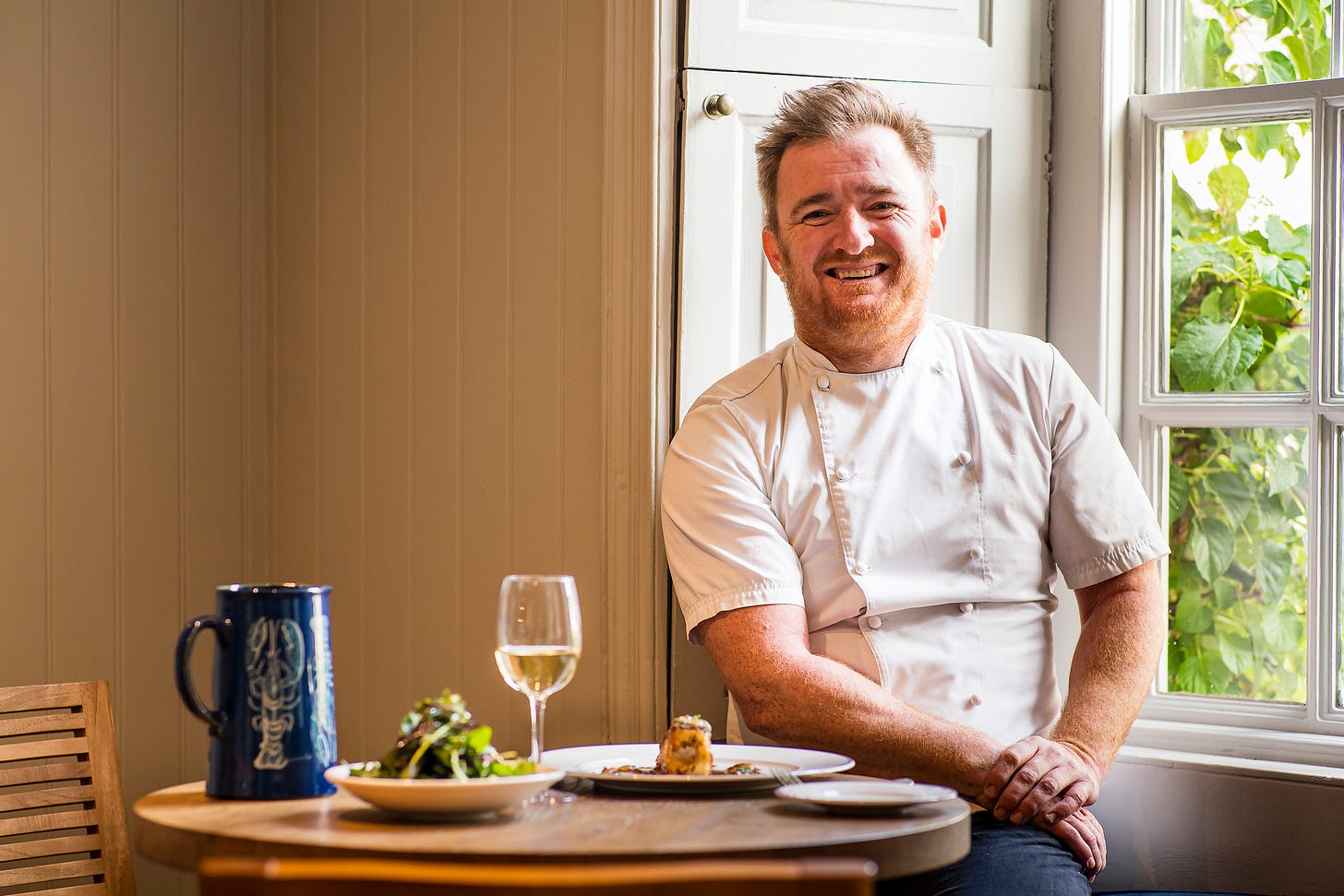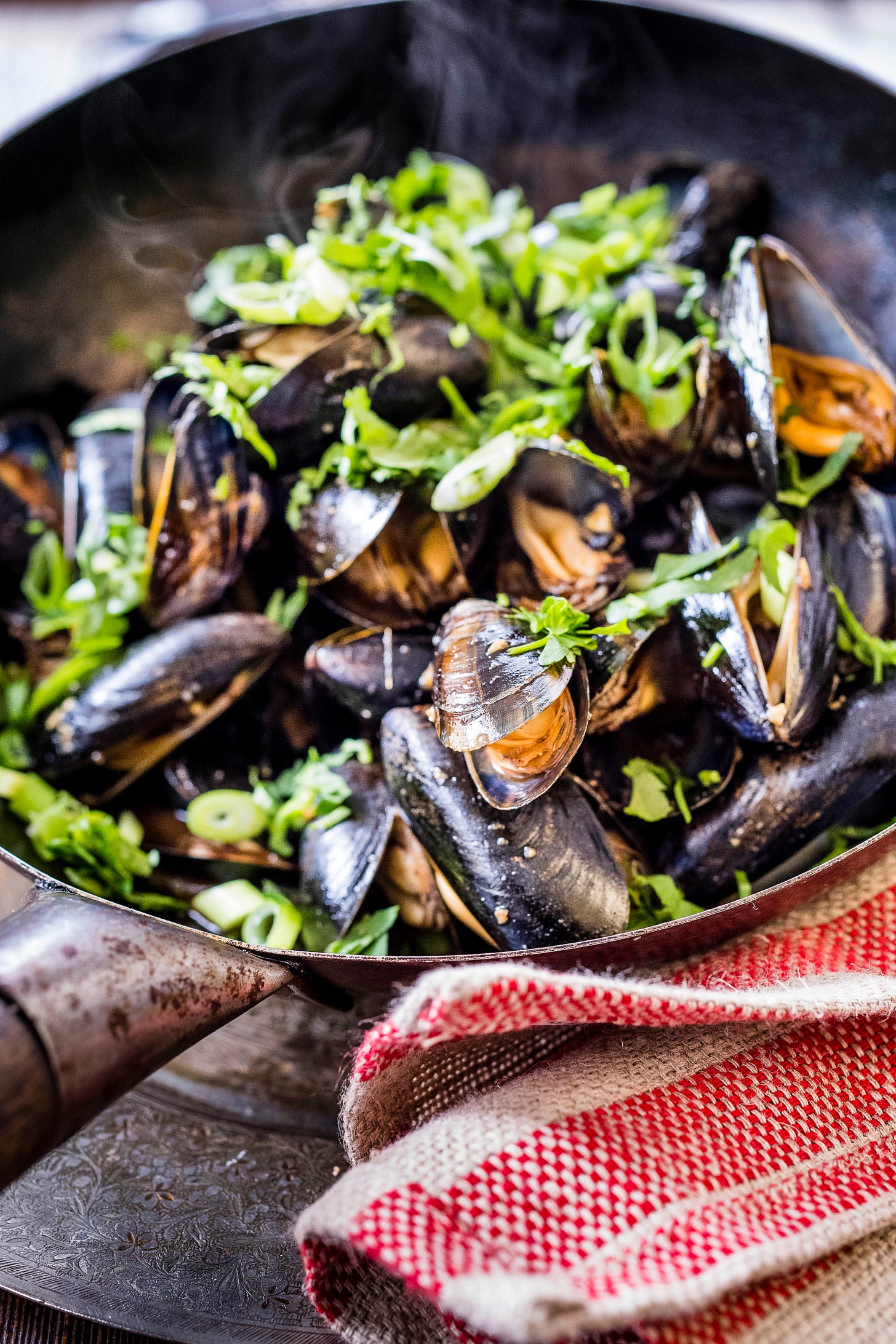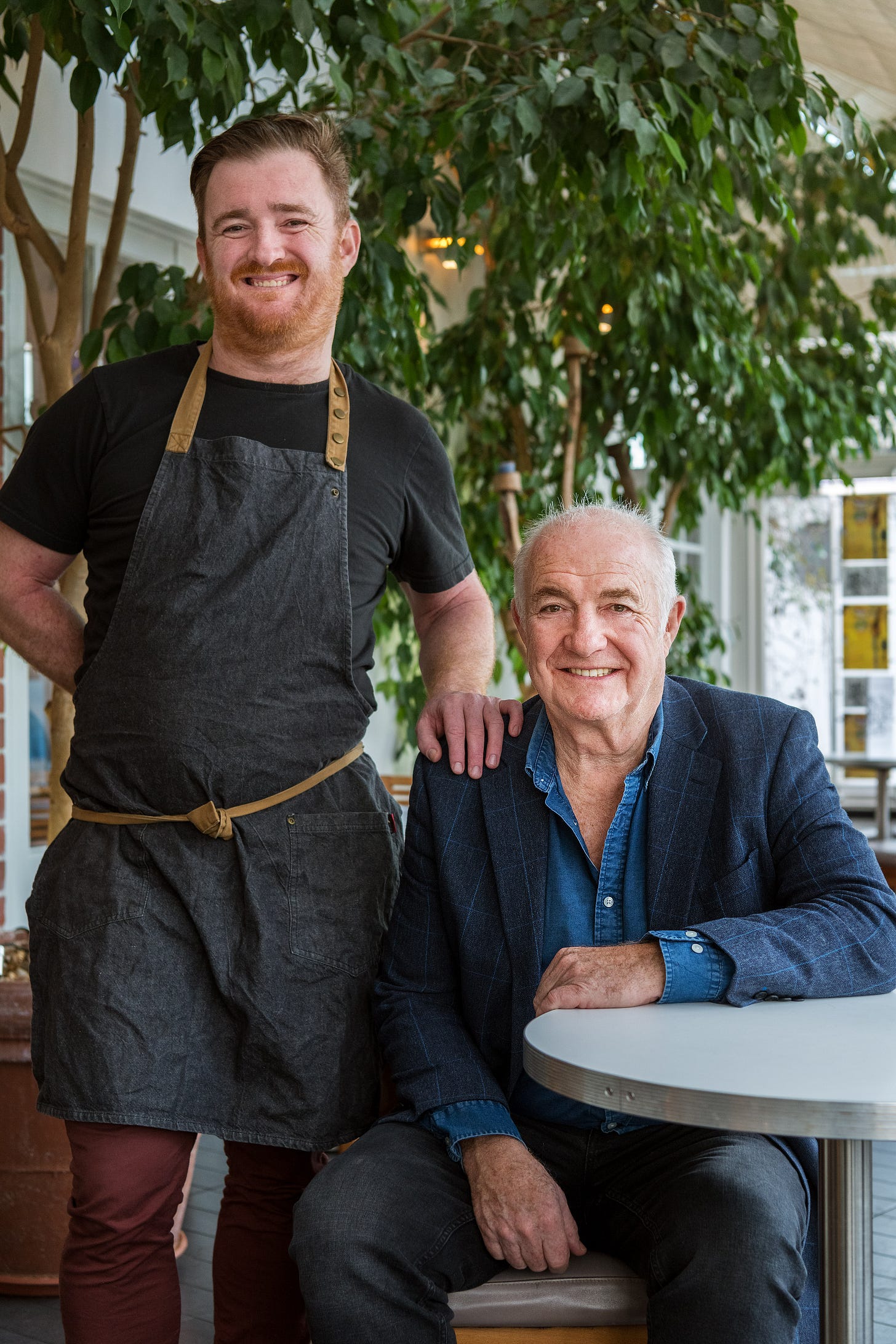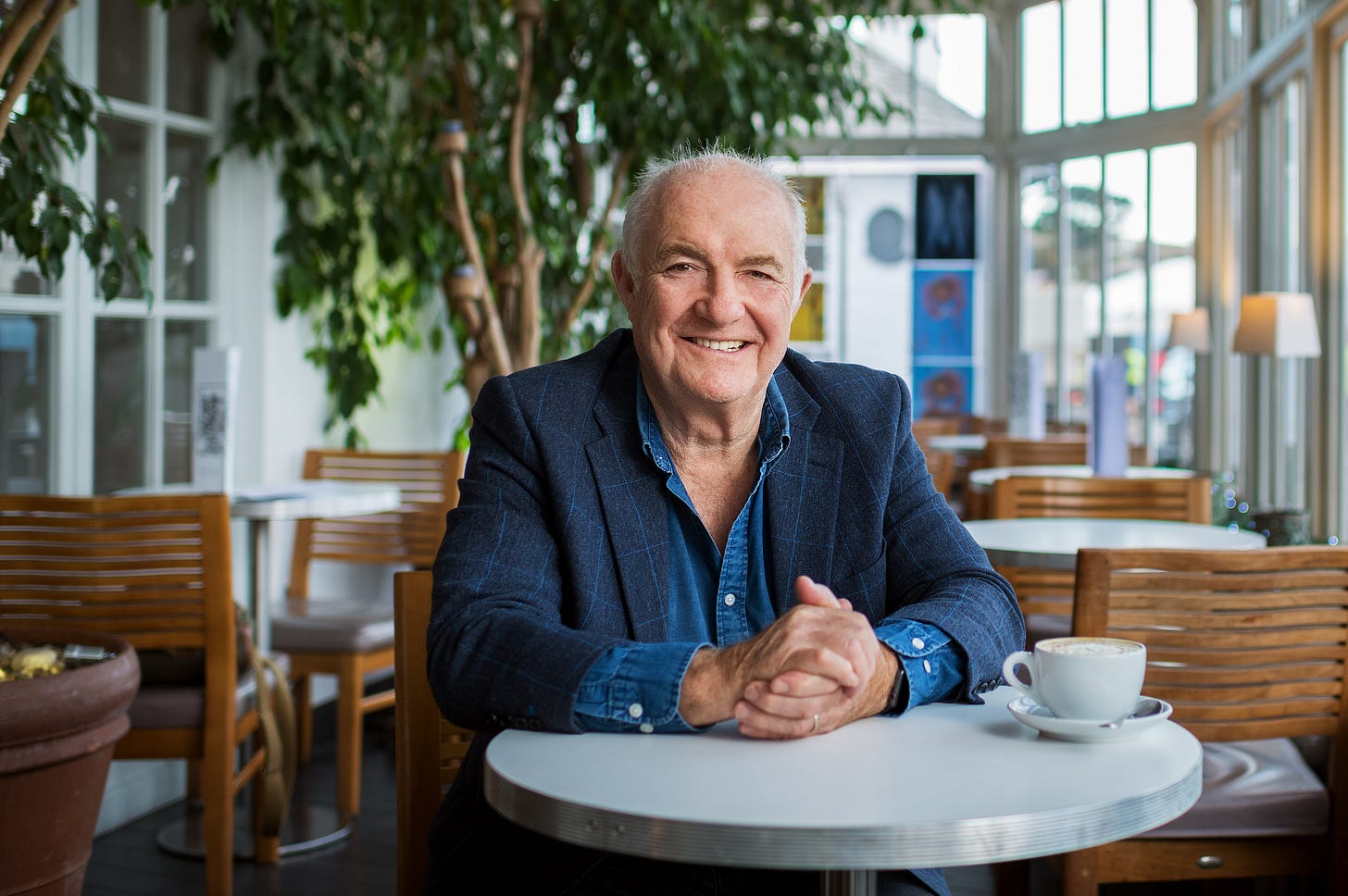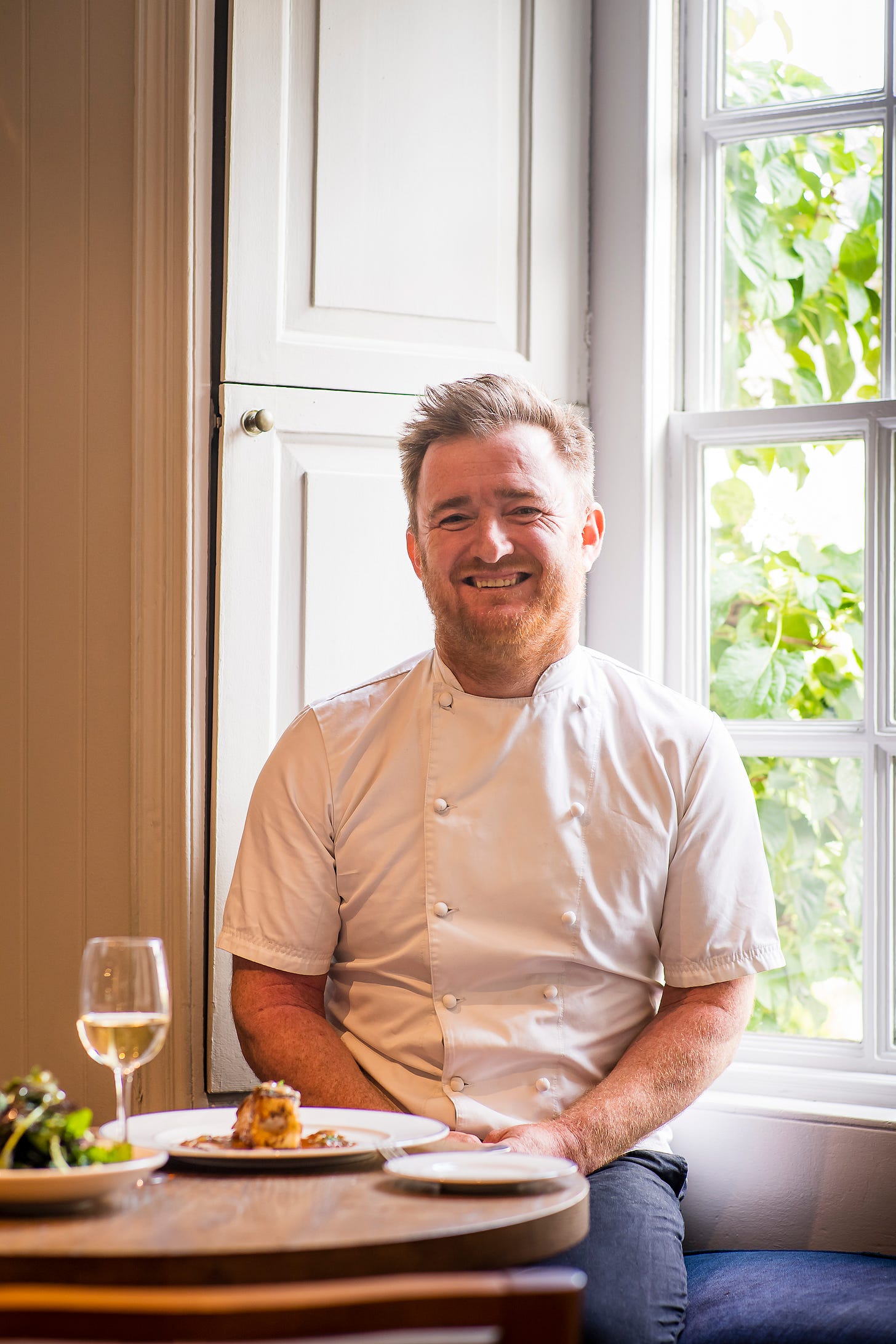Chef Jack Stein on a Plate
A culinary life in five delicious dishes
Jack Stein has been Chef Director of Rick Stein’s restaurants since 2017. Born in Cornwall, Jack is the middle son of Rick and Jill Stein. He oversees the menus of the group that includes The Seafood Restaurant (celebrating it’s 50th anniversary this year), St Petroc’s, Rick Stein’s Cafe, Stein’s Fish and Chips, Seafood Bar and Fishmongers, Ruby’s Bar and The Cornish Arms (all in Padstow, Cornwall) as well as Fistrtal in Newquay. Outside of Cornwall, the group has restaruants in Sandbanks, Winchester, Malborough and Barnes, all opened under Jack’s direction.
Jack has his own cookery course at the Rick Stein’s Cookery School in Padstow and is a familiar face on television with series including Wine, Dine and Stein (co-hosted with brother Charlie), Jack Stein: Born to Cook on SBS and UKTV food, and Inside the Box. Plus, appearances on Saturday Kitchen, Sunday Brunch, a regular spot on Steph’s Packed Lunch and also featured on ITV’s Cooking with the Stars. Jack was voted Best Chef at the 2023 Food Magazine Reader Awards and is the author of cookbook, World on a Plate, released by Bloomsbury Cooks and Absolute Press.
The Five Dishes
Moules marinière
My career started as a kitchen porter doing prep and washing dishes when I was 13 or 14. I did a summer at Stein’s Cafe in Padstow, which just does sandwiches and basic stuff, but we did moules marinière. That was the first dish I was shown to cook that was given to a punter. I remember how I felt when it went out to the customer. A lot of chefs have this kind of desire to please people, and that's part of hospitality obviously, but as a chef, you are incredibly pleased. I always say to the front of house guys, if you get comments, just bring them back because, even if it's like ‘that was the best portion of mussles I’ve ever had’, you don't realize how much that will mean to a young chef. When you're struggling - you might be going though a bit of a tough patch in the kitchen and trying to learn a new section - and it just gives you that little bit of ego boost.
My first day cooking starters at The Seafood would have been about 2005. I was plating up for six months when I came back from uni, learning how all the dishes looked. On my first day cooking lunch I went in to do a portion of mussels. In the mise on place you've got a container full of bay leaf, thyme and garlic infused cream You soften your shallots, put the infused cream in and then the mussels and put the lid on. A couple of minutes later when I went open them to have a look, they had just completely congealed. And I was like, what the hell's happening here? I did another portion, the same thing happened again. So I went up to the sous chef and he's like, “You're putting the sweet corn pancake batter mix in that we use for the foie gras dish”. That would've been a decade after I first did mussels at the cafe.
Moules marinière for me is just that principle of softening onions and then getting the right amount of wine to steam the mussels open. And then also just the idea of that muscle juice itself acting like a seasoning and then just some parley on top. It's really, really basic, but it's a la minute cooking of a fresh product and I just really love it.
Mussels have got great sustainability credentials obviously and they’re versatile. There are so many variations on moules marinière. You go to Hong Kong and they're serving them with black beans, soy and rice wine, and you go to Australia and they like to serve them with chili tomato sauce. In the Mediterranean, you see them in pasta dishes. Mussles and chips sat somewhere in France with some muscadet, you can't go wrong with that.
Lobster and chips
When Dad’s first TV series got commissioned in 1995, he came back with a lobster for the family. That was very unusual, he would never bring lobsters home, they were too expensive, he needed to sell them at work. Any kind of white burgundy, we didn't drink that ever. I know there's restaurants that just do lobster and chips now, but that was very him. I remember him being really happy.
It was a strange way the series was commissioned. Originally, the director David Pritchard, who was with Keith Floyd, pitched Rick to the BBC as a sort of chop and chat chef, more like a Delia sort of thing. They sent that in and the BBC were like, nah, sorry. Then David put together a piece to camera with Dad down at the Barbican in Plymouth. He was just looking at the fishing boats and talking like he does now, that kind of very relaxed, unscripted chat and they commissioned it off the back of that. They said, that's what we want so it was lucky, really. The runner on that shoot was Melanie Leach who now runs South Shore production company who do a lot of food TV and I now work with them on Cooking With The Stars on ITV, so it’s come full circle.
The power of food TV in the 90s and 2000s was massive. It was transformative to not just how many covers we were doing, but how many days we were open and how many weeks of the year we were open. We used to be closed from Halloween half term to Easter. We may have opened February half term sometimes, but most years we'd go away for that period. That's when we were travelling to Asia and the Far East and finding all these new recipes, which Rick was just going crazy for. He’d worked his passage over to Australia in the sixties and he had met a guy there who he was very good friends with. We kept going back from ’84 to ’96 almost every year to Sydney and seeing him and his family and then just stopping off in Singapore, Bangkok, Hong Kong, India - we did the whole Asian subcontinent.
That's where the TV gave us the ability to then start flexing into different preparations as opposed to just being a French restaurant. The Seafood restaurant in 1988 would've been as close to something you would find in La Rochelle or Cancale or somewhere like that in Brittany. By the time the show had come out there was Goan fish curries on the menu. Michelin said to us that they wouldn't consider us because we had fish curry on the menu, which just goes to show how much they've changed. We've now got restaurants with two stars that serve curries in London.
Dad's still firing on all cylinders and he's not slowing down. He's very busy, he's got restaurants in Australia and he's got his TV, his books and he's just about to film a new show in Australia. We are taking over the day-to-day running of the business, but it's still very much in Mum and Dad's mould. We're not changing anything, we're just taking the reins more and making sure that the family is briefed on what's going on. We have a very good working relationship. We have regular catchups as a family and just me and him. He gets very excited when he sees something new so it's just about making sure that he’s not jet lagged and hung over and sending me messages at four in the morning and were getting that stuff down and putting it on the menu.
We are looking at new sites in Central London. It will be quick service like Flat Iron but with fish and a bit of shellfish. You're going there for the fish and chips, but you might have a little spider crab rarebit or something that's traditionally British, so it has a tourist angle as well as a foodie angle. We've a got fish finger sandwich we've been working on and a little tuna cheeseburger. So there’s lots going on.
When I cook mains at The Seafood now, we have lobster one of three ways - thermidor, grilled with a little emulsion of lobster stock, fish sauce, lemon juice and fines herbes and then you have it just plain boiled or steamed with mayonnaise. I love all three of them, but for me, when I see the grilled lobster and chips go up it does take me back to that time where we had it after Dad’s series was commissioned. I just love it. It says a lot about our style of food, it's what we like to eat. I know a lot of chefs that come and eat with us who are serving incredibly complicated food in their own restaurants, but I think the older you get, the more you appreciate the simple things sometimes. And lobster and chips for me is one of those.
Turbot ragu
This is the first dish I got in a book. I was writing my cookbook at the time, so it was in mine, but then Dad nicked it and put in one of his. It was an homage to some of the restaurants that I had staged in. It was turbot with a pan fried scallop. The base sauce is quite wintery, it's got celeriac carrot and leek, then it's a reduction of Vouvray, fish stock and cream and it's finished with basil.
It's a really nice dish, but it's kind of wintery, earthy comfort food. So I said, I want to do a version that's of the springtime and uses the vegetables from Ross Geach’s Padstow Kitchen Garden up the road. At the time, Ross was still a chef for us but he was starting to grow a lot of veg. So I said, look, whatever you've got, we use in this dish, so it could have a combinations of courgettes, peas, asparagus, a bit of tomato - anything that's spring, summer season.
I looked at how they did the Gargouillou vegetable starter when I went to work for Michel Bras in France. They cook all those vegetables in their own specific way and it's all unbelievably complicated for a very simple vegetable dish. When you eat the dish, it's so lovely, and one of the reasons it's so lovely is that they put a bit of ham fat just to start the cooking of the vegetables after they've all been blanched. So with this turbot dish we did that. We start with a bit of Serrano or Iberico ham fat, and then the vegetables.
Working with Michel Bras was incredible but it was way out of my league. When you see a three star kitchen fully pumping it is an amazing thing, but my takeaway was I'm not good enough. I marketed that to myself by saying I would prefer simple food. I also spent a month at The Fat Duck lab. We're very close with that group, always have been. Even though the two companies are very, very different, we've always just really got on. At any point we've had alumni chef of ours as head chef at Dinner by Heston or The Fat Duck and a lot of our managers have gone to The Fat Duck group after us.
The sauce for the tubot ragu is just chicken stock and white miso and just a little bit of preserved lemon for acidity. That was from when I was at Tetsuya in Sydney. They did this lamb dish with white miso and chicken stock and cream. When you first taste these really savory compounds, whether it's miso or Marmite, it really just fills the palette with that kind of umami flavor. We made it and that's been on the menu for ages and it always goes down really well.
You can pay homage to dishes in different ways. You can be open and say, “this is pig trotter Pierre Koffmann”, but this is just two very, very small little details that I picked up from two dishes that I really liked when I was at the restaurants. I just put them together to make something completely new and different, and also different to anything that we’d had before. Dad really liked it enough to put in his book so I was pretty proud of that.
Bourride
I love a bouillabaisse, don't get me wrong, but I just think bourride is the best fish stew in the world. It’s something about emulsifying the aioli into it at the end. It can be a tricky dish in a restaurant. You can split it quite easily. People would rather do a bouillabaisse where you're serving the rouille or aioli on the side, but when you really nail it there’s nothing better. Also, it's so good that you can use all the different species of fish you want in there, whatever you can get that day. I like that idea of being able to speak to a fish supplier and find out what's good at the moment. I just love that dish. It's one of the dishes I cook at home a lot.
At The Seafood and St Petroc’s, there'll be a variation of a fish stew on, whether it's cotriade or bouillabaisse, there'll be a version of that. We did bourride on Saturday Kitchen the last time me and Dad were on. I did it on Cooking With The Stars in the first season with AJ Odudu. We got to the final in the first year and we did that as our French course. The other chefs - Rosemary Shrager, Judy Joo and Tristan Welch - you knew they loved it because it’s just a chef's dish.
Roast Dinner
When I was growing up, Sundays was the day when the restaurant was closed. We obviously had nannies and child minders because Mum and Dad were working all the time, but Sunday we would sit down and have dinner. Sometimes it was roast fish, but a lot of time roast beef or whatever meat. I still do my roast very similar to how Dad does it with vichy carrots and the dark green veg with confit garlic and all the different things. It's really inspired me to firm up my own roast. Roast dinner is a bit like some Texan special barbecue rub, you make it your own. We do a really good roast at The Cornish Arms. It was Mum’s birthday on Sunday and we went for a roast and it was really, really good.
One of the things that I did when I first got into cooking was read Howard McGee's book On Food and Cooking about the science of cookery. I've actually met him a couple of times at the Noma MAD conference and talked to him at length about things; how influential that book was, not just to me, but to Heston Blumenthal and Ferran Adria and to everybody because it demystified the kitchen. The thing that I got from that was, you can get a piece of topside or silverside and seal that off in a pan and stick it in your oven at 55°C for five or six hours and you end up with perfect rare roast beef. You do need to work at making a gravy because you don't get any juice coming off it, it's just perfect all the way through. It's a bit like sous vide but in your conventional oven at home. I've been cooking my roast like that since the mid 2000s and that's down to Harold McGee.
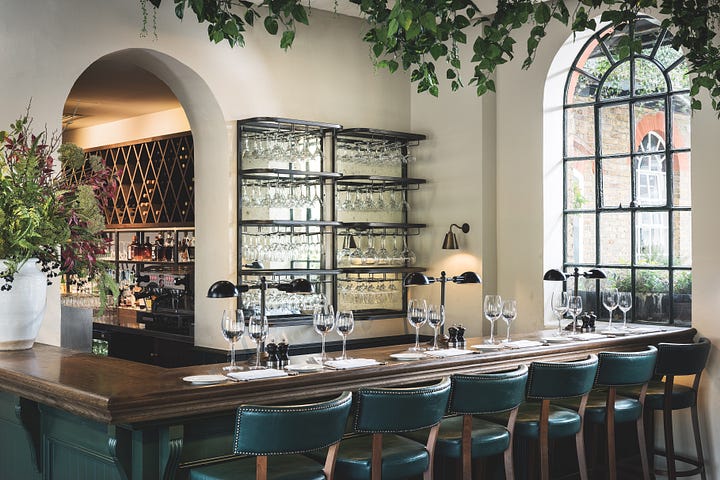
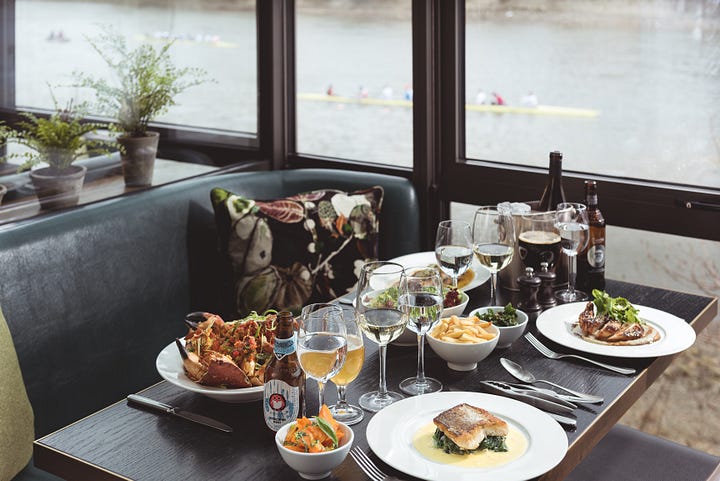
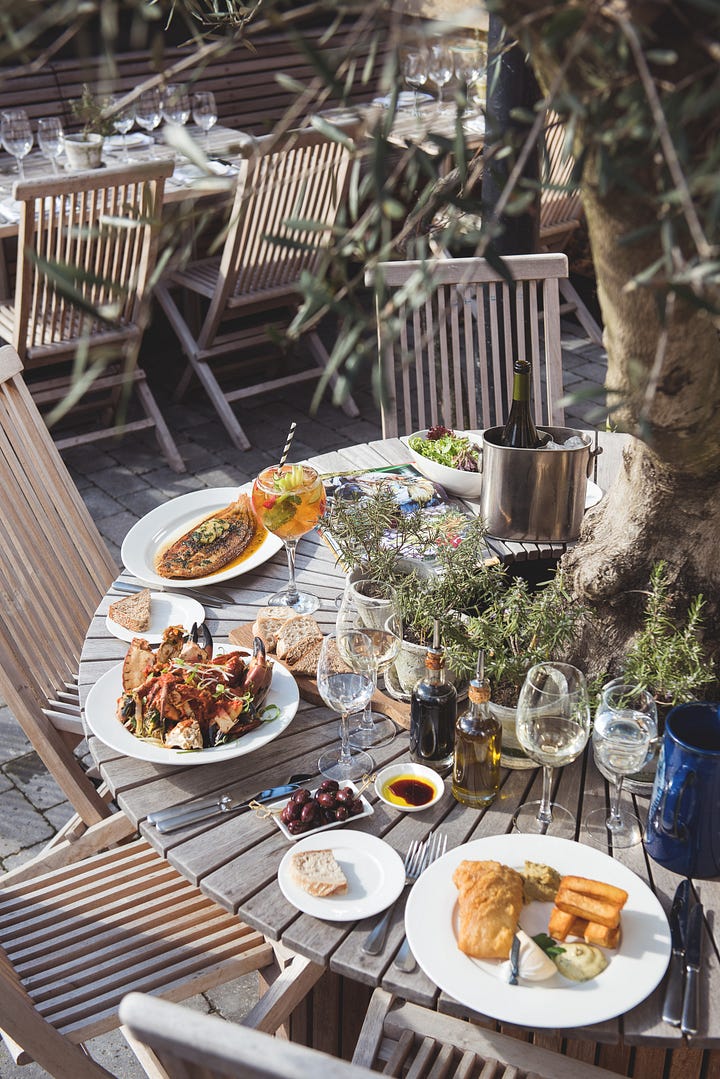
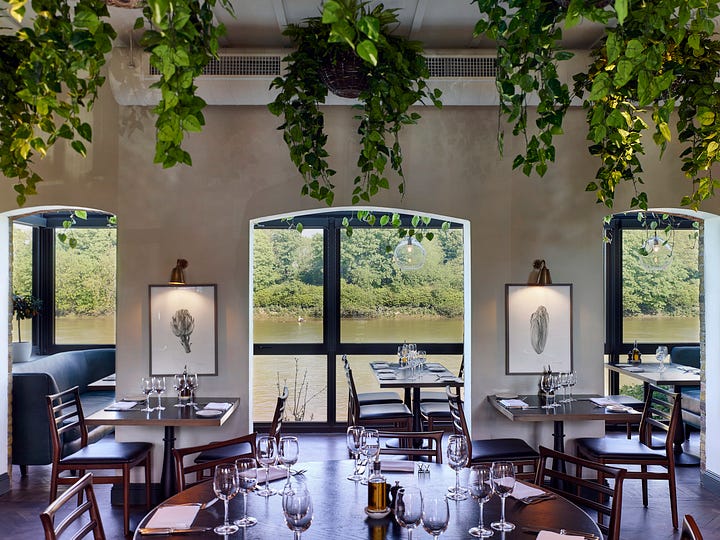
My gravy has been heavily influenced by Howard McGee and other books since then in terms of adding umami flavors to it. I’ve got soy sauce in there, I've got Marmite in there, I've got various vinegars, whichever one I like at the moment, whether it's Chinese fermented black vinegar or nice balsamic or cider, and then some sweetness to the gravy - fruit, agave, honey, mirin, whatever - you've got all of these flavors in the gravy to make it just so full of flavor.
People can be a bit sniffy about the British food, but you think most people can get a roast out and if you can get a roast out, you're covering every single section of a professional kitchen. You've got veg, if you're doing Yorkies, you've got pastry, you've got sauce, you've got meat cookery, the whole thing. To bring it all together on the pass, or in your kitchen and on your family table at the same time takes quite a lot of work.
Five more dishes with recipes
Jack Stein’s Mussels with Miso and Black Beans
Jack says: “The interaction between savoury ingredients, such as the miso and the soy sauce, and the sweetness of the mussels produces a perfect balance.”
Ingredients (serves 4)
1.75kg mussels
1 teaspoon Chinese salted black beans
¼ teaspoon sugar
3 spring onions
2 tablespoons groundnut oil 4 garlic cloves, finely chopped
15g fresh root ginger, peeled and finely chopped
1 teaspoon brown miso
1 tablespoon dark soy sauce 2 tablespoons Chinese rice wine or dry sherry
3 tablespoons fish stock
1 tablespoon chopped fresh coriander
Method
First clean the mussels. Fill the sink with water and add the mussels; move them around in the water – dirt will fall to the bottom. Place the mussels in a colander and run water through them; shake them a bit. Discard any that are open after being in the water and that don’t close when tapped on the counter.
Rinse the black beans, then place them in a bowl; add the sugar and mash together.
Trim the spring onions and cut across them to separate the white part from the green. Thinly slice both sections and place in separate bowls.
Put the groundnut oil in a wok or large, deep-frying pan, with a lid, and heat until very hot. Add the mussels, and stir-fry until you smell the smokiness of the shells, about 1 minute.
Now add the garlic, ginger and black beans and stir-fry for about 30 seconds, until the smell of hot ginger and garlic rises. Add the white of the spring onions and stir-fry for a few seconds. Now add the miso, soy sauce, rice wine or sherry, and stock. Cover and steam the mussels open for about 3–4 minutes.
Add the coriander and the green spring onion, toss together and serve with some toasted sourdough bread for dipping in the sauce.
Keep reading with a 7-day free trial
Subscribe to Smashed to keep reading this post and get 7 days of free access to the full post archives.



